The Châteaux of the Loire, a Royal River
Have you ever wondered how Leonardo da Vinci’s Mona Lisa came to hang in Paris’s Louvre Museum? Well, no, it wasn’t through a sale at some prestigious global auction house, or even a dusty attic find. Five hundred years ago, Leonardo came to live in France at the invitation of the French king, François I, who had a passion for Italian art. Amboise, a royal town spanning the River Loire, was to be Leonardo’s home.
As ‘first painter’ to François, the artist was offered a residence close to the Royal Château, the Manoir du Cloux, now known as the Château du Clos-Lucé. There, Leonardo stored three paintings that, because of his fondness for them, he had brought with him on his travels from Italy: The Virgin and Child with St Anne; St John the Baptist and the mysterious Mona Lisa. All three masterpieces now hang in the Louvre.
Leonardo da Vinci, whose talents as an engineer were put to good use during his three years living beside the River Loire, is just one of the many people who have helped to shape the Val de Loire over the centuries. The valley’s incredible concentration of feudal castles, grand palaces and pleasure houses has not sprung up alongside the river naturally, though it would sometimes appear that way – such is the affinity of these architectural masterpieces with the landscape.
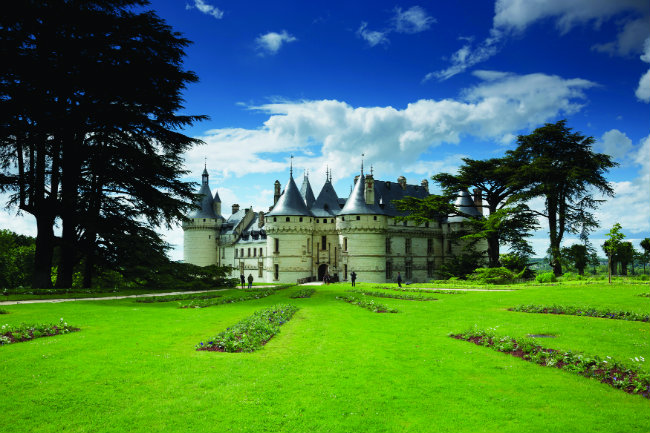
The Chateau de Chaumont-sur-Loire
Like any family home, the Loire’s châteaux are about people. Royal kings, queens, counts, dukes – and a 15th-century teenage heroine who had a particular dislike of the English – have played a part in creating a landscape that is today one of the largest UNESCO World Heritage Sites. At 280 kilometres long (between the towns of Sully-sur-Loire and Chalonnes-sur-Loire) and 800 square kilometres, the Heritage Site covers a significant chunk of the Val de Loire, incorporating 164 towns and villages and almost as many châteaux.
Renaissance Royalty
Little wonder then that the Loire Valley, once the chosen pleasure grounds of Renaissance royalty, has become the landscape of choice for global tourists who venture from one château to another to gain a glimpse of art treasures, sumptuous interior decoration and one of those oh-so-classic Loire Valley river views of regal towns like Amboise or Blois. And, just as the royal presiders shaped the region centuries ago, it is today’s residents of the Val de Loire, with their placid, easy-going joie de vivre and modest taste, who help to infuse a relaxed ambience across the valley and that of the Loire’s scenic tributaries within the region – the Cher, Indre, Vienne, Loir and Loiret.
Couple culture-cramming in the Loire’s châteaux with a quiet sojourn beneath the mistletoe-drenched poplar trees on the banks of the peaceful Indre, a gentle drift downstream on one of the Loire’s traditional flat-bottomed boats or a pause at the gate of a local fruit grower to purchase pungently-ripe peaches – the sort that are so perfumed with ripeness, the juice dribbles down your arm as you bite – and you’ll get a sense that the Loire Valley is not a place to be hurried. Especially when you opt for an al-fresco lunch overlooking the shimmering river – any one of them – or a café in Tours’ half-timbered Place Plumereau and placed in front of you is an assiette aux fromages showcasing the five PDO (Protected Designation of Origin) goats’ cheeses from the region, including the notable Crottin de Chavignol, combined with a chilled glass of minerally Sancerre or mellow Vouvray.
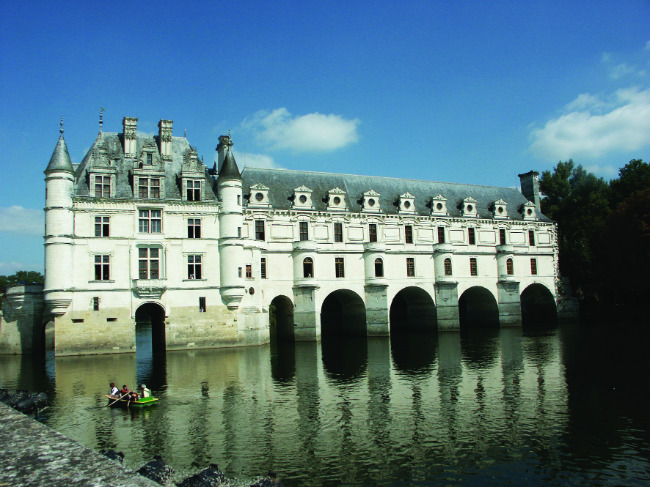
The Chateau de Chenonceau. Photo: Caroline Mills
Despite the modern names for France’s administrative departments, Loire locals, winegrowers and tourist boards alike hark back to the traditional provinces of old – Anjou, Touraine, Berry, and the Orléanais, whose city, Orléans, was the capital of medieval France. That’s no bad thing for understanding the Loire and its châteaux. For it was the Counts of Anjou and Blois, and the Dukes of Berry and Orléans who built many of these magnificent houses.
From feudal castles to graceful pleasure palaces, architectural style changed in accordance with the requirements of the châteaux’s owners as war and peace flowed like that of the companion river. Defensive elements such as watchtowers became decorative features – the fairytale turrets of Château d’Ussé, which was first a medieval stronghold and subsequently turned into a pleasure palace, a key example. Then, as the Renaissance King François I came to the throne, he brought Italian craftsmen to the Loire, who added Italianate features and ever more intricate decoration.
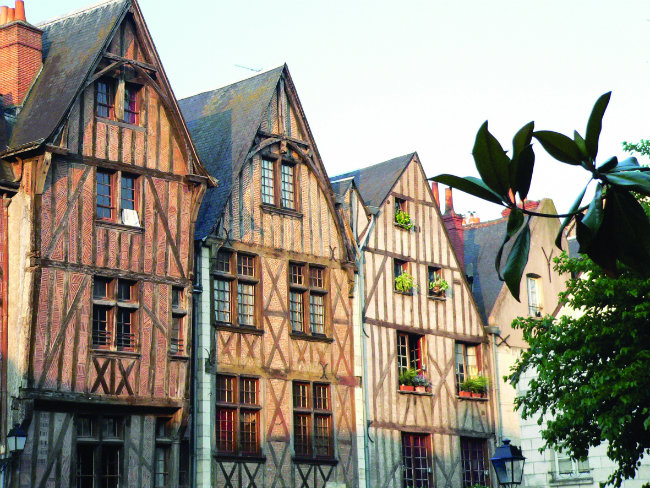
Place Plumereau in Tours. Photo: ADT Touraine
Stories of a Nation
The walls of the Loire’s châteaux have many an historic story of national significance to tell. The château in the royal town of Loches was occupied by English Plantagenet King Henry II, handed to the French but seized back by Henry’s son, Richard the Lionheart. Over 200 years later, in 1429, it was here that the teenage Joan of Arc, unsullied from her skirmish with the English in Orléans, persuaded the dauphin Charles to head to Reims and be crowned King Charles VII.
And, by the end of the century, Langeais, west of Tours, witnessed the marriage of Charles VIII – who had been born 21 years earlier in the Château d’Amboise, 65 kilometres upstream – to Anne of Brittany. The union incorporated the Duchy of Brittany into the French kingdom.
Loches, overlooking the River Indre, is just one of many châteaux with magnificent viewpoints. You can also find superb views of the Loire Valley from the châteaux at Chaumont-sur-Loire, sitting 40 metros above the river; Amboise, whose landscaped gardens offer some of the best views along the valley; and Sully-sur-Loire, whose 15th-century turreted castle sits right on the banks of the Loire.
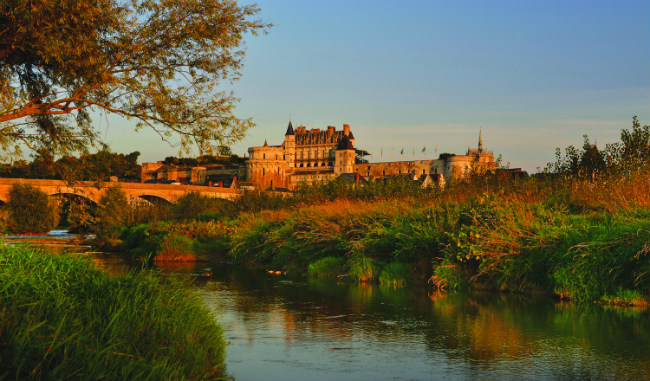
Amboise, where Leonardo da Vinci lived. Photo: ADT Touraine
A World of Interiors
Visitors to the Château de Chambord, created not as a residential home but as a royal hunting lodge, are often surprised by the sparseness of the furnishings, despite the richness of the interior decoration. Other châteaux, however, are stuffed full with period pieces and notable art collections.
Langeais is furnished in keeping with its 15th-century character. Cheverny, which initiated a new Classical architectural style for Loire Valley châteaux in the 17th century, offers a rich and elegant art de vivre decorated interior, while the informal Château de Saché, the second home of distinguished writer Honoré de Balzac, is brimming with interior furnishings from the 19th century. The author wrote two of his major novels here, including Le Lys dans la Vallée (The Lily of the Valley) set in the Indre Valley. The château is furnished as it would have been during Balzac’s residencies, displaying sketches, manuscripts and letters of the writer, along with memorabilia.
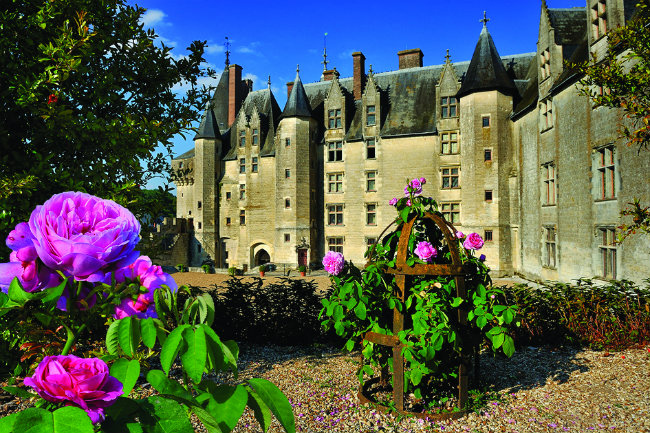
Langeais, where Charles VIII married Anne of Brittany. Photo: Chateau de Langeais
Valençay, one of the châteaux that stands most to the south of the Cher, and Chenonceau, which straddles the Cher, both have notable art collections. Chenonceau’s includes an exceptional selection of Old Masters alongside extremely rare 16th-century Flemish tapestries; and the château at Blois houses a Fine Arts Museum including works by Ingres, Rubens and Boucher.
Perhaps the most significant of all interiors, though, is that of the Château de Beauregard. Here, the Gallery of Portraits provides a Who’s Who of famous faces from 1328 to 1643. Over 320 paintings of dignitaries from 26 countries line the walls – kings, queens, princes and emperors mingle with popes, sultans and explorers. Not least, on the floor of the gallery are 150 square metres of Delft tiles – making this the largest Delft-tile floor in Europe.
An azure sky over the river valley can’t fail to bring with it the clatter of cameras clamouring to get that ultimate picture, for the Loire Valley’s status as a UNESCO World Heritage Site is not just about the royal history of the region, but as much about its beauty. Château d’Azay-le-Rideau, to the south-west of Tours, with its graceful lines of symmetry, corner turrets and lakeland mirror image, is considered one of the most photogenic.
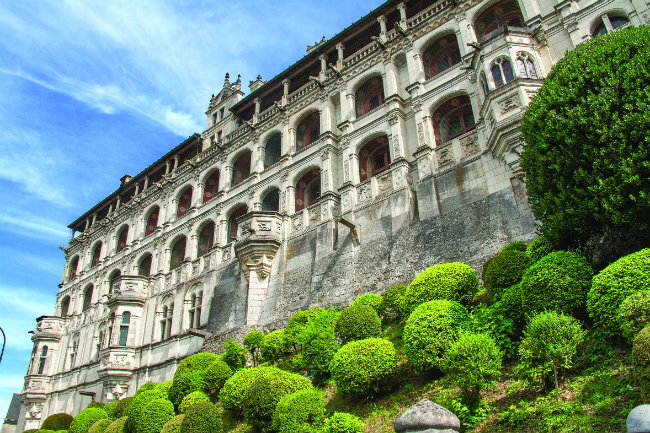
The chateau at Blois. Photo: Fotolia
Meantime, the royal château at Blois offers four entirely different façades – Medieval, Gothic, Renaissance and Classical – covering its 1,000 years of regal history, while central to the inner courtyard is François I’s highly ornate octagonal staircase. Blois is one of several châteaux that create an annual Son-et-Lumière show, using its external walls to bring an historical spectacle to the night-time audiences.
And, of course, while the Château de Villandry has an interior that’s open for all to see, it is the remarkable Renaissance gardens for which most visitors are here. The world’s largest ornamental kitchen garden, complete with 52 kilometres of boxwood and 115,000 flower and vegetable plants, is both tremendous and overwhelming. I like to climb to the woodland Belvedere, from where you can gain an unrivalled view across the garden.
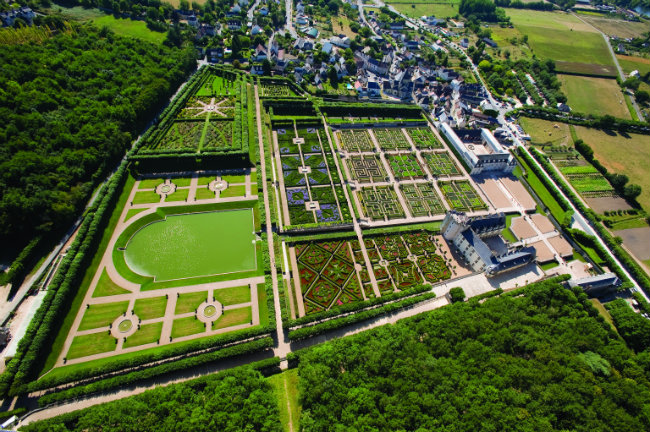
Villandry’s Renaissance gardens. Photo: Château de Villandry
Breathing New Life
For all the history that surrounds the châteaux, they could be misconstrued as stuffy old buildings filled with ancient relics. Not a bit of it. The Loire’s châteaux continue to live and breathe, retaining personal character for which each is worthy of a visit.
Created in the silent and marshy Sologne region, Chambord’s domain of 5,400 hectares, surrounded by a 20-mile-long wall, is the largest enclosed forest in Europe. In 2015, the estate replanted vines that were introduced 500 years ago by François I, with a first harvest in 2019.
Elsewhere in the park, 40 beehives have been set up amid the heather fields to make delicious Chambord honey. The aim is to increase the number of bee colonies in the Val de Loire in a very deliberate initiative to preserve a local honeybee species known as the abeille noire (black bee), whose long-term survival is under threat. Of all the different honeybees there are here, the black bee visits the most diverse range of plants and therefore contributes greatly to the pollination and conservation of numerous species of wild plants in the Sologne.
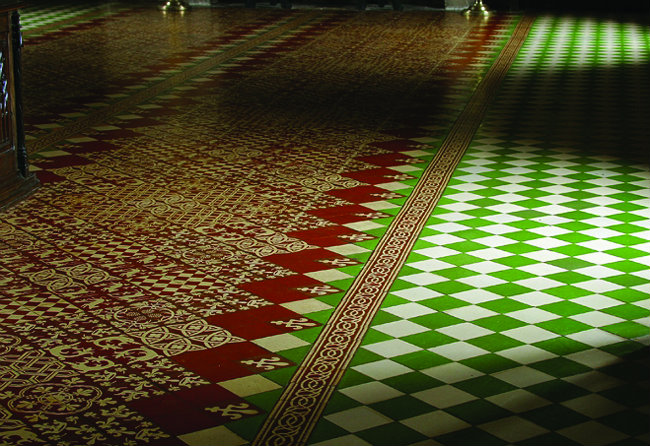
Floor tiling at Langeais. Photo: Chateau de Langeais
The Château de Chaumont-sur-Loire, the 15th-century home to Catherine de’ Medici, and latterly Diane de Poitiers after she was forced out of Chenonceau, is a Centre for Arts and Nature, with numerous artistic exhibitions and artists in residence. In addition, it hosts the annual International Garden Festival, a very popular event.
Privately-owned Château de Nitray, between Amboise and Chenonceau, produces a collection of AOC Touraine wines from its ten hectares of vines while Valençay hosts Gourmet Thursdays. The château, noted for its famous 19th-century chef Marie-Antoine Carême, uses its impressive kitchens for top chefs from local restaurants to prepare fine cuisine using local produce.
And Villandry’s gardens are not only used for authoritative Kitchen Garden Days, when visitors get to meet the knowledgeable gardeners. This year, September 18th saw participants in the Touraine-Loire Valley Marathon run around the kitchen garden before heading to Tours!
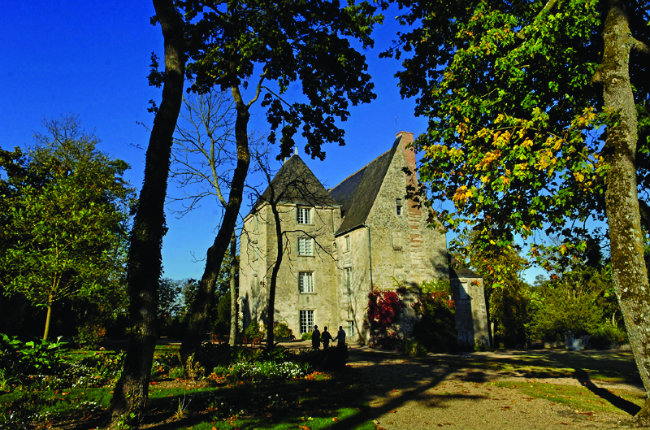
Château de Saché, the second home of Honoré de Balzac. Photo: ADT Touraine
Pick of the Châteaux
Ask people which châteaux of the Loire should be on a ‘must see’ list and you’re likely to receive a different answer each time. Statistics say that Chambord is the most visited, followed by Chaumont, Cheverny and Azay-le-Rideau. Of the major châteaux my personal preference is Chenonceau.
Known as the Château des Dames for the many women that have built, extended and embellished Chenonceau over the centuries, there’s plenty to appreciate. Diane de Poitiers and Catherine de’ Medici, mistress and wife respectively to the French King Henri II, provide an unrivalled history of rivalry, borne out in the very fabric of the building and its grounds. Chenonceau’s structure, built using the creamy white tufa stone that is so synonymous with the Loire Valley, is remarkable with the chequer-floored Grand Gallery more than eye-catching. And the setting, straddling the River Cher is, quite simply, perfection.
From France Today magazine
Related articles: Things to See and Do in the Loire Valley
A Dozen of the Loire Valley’s Finest Gardens
500 Year Anniversary: Leonardo da Vinci in the Loire Valley
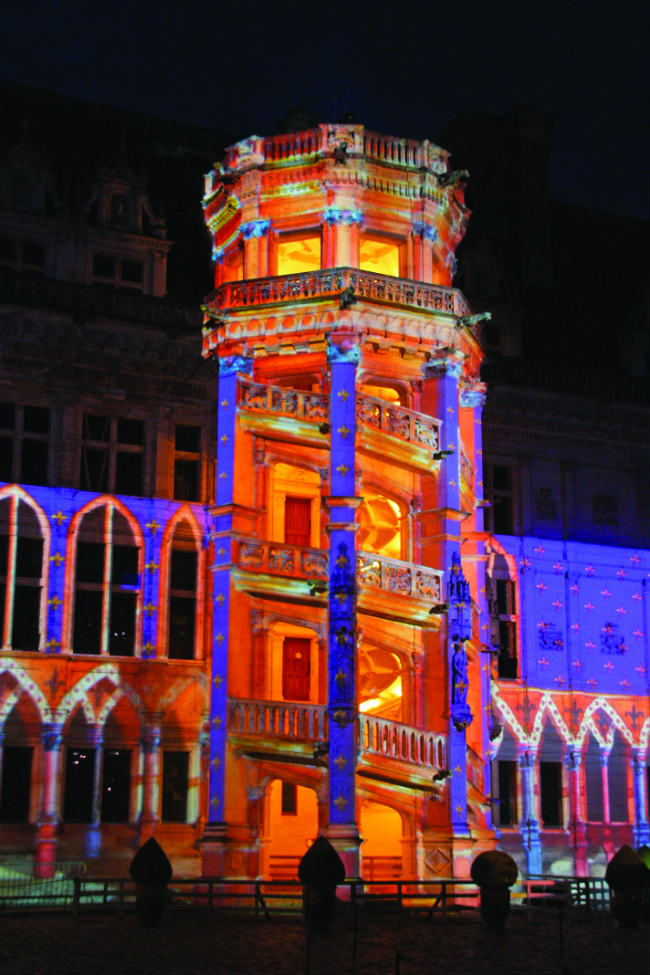
The Sound and Light Festival at Blois. Photo: D Lepissier
Share to: Facebook Twitter LinkedIn Email
Leave a reply
Your email address will not be published. Required fields are marked *

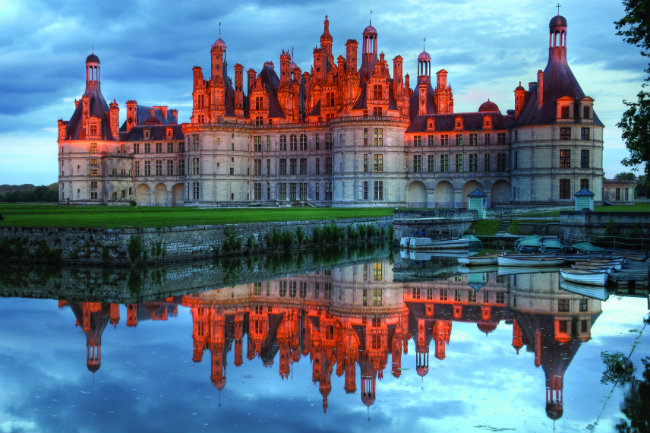




REPLY